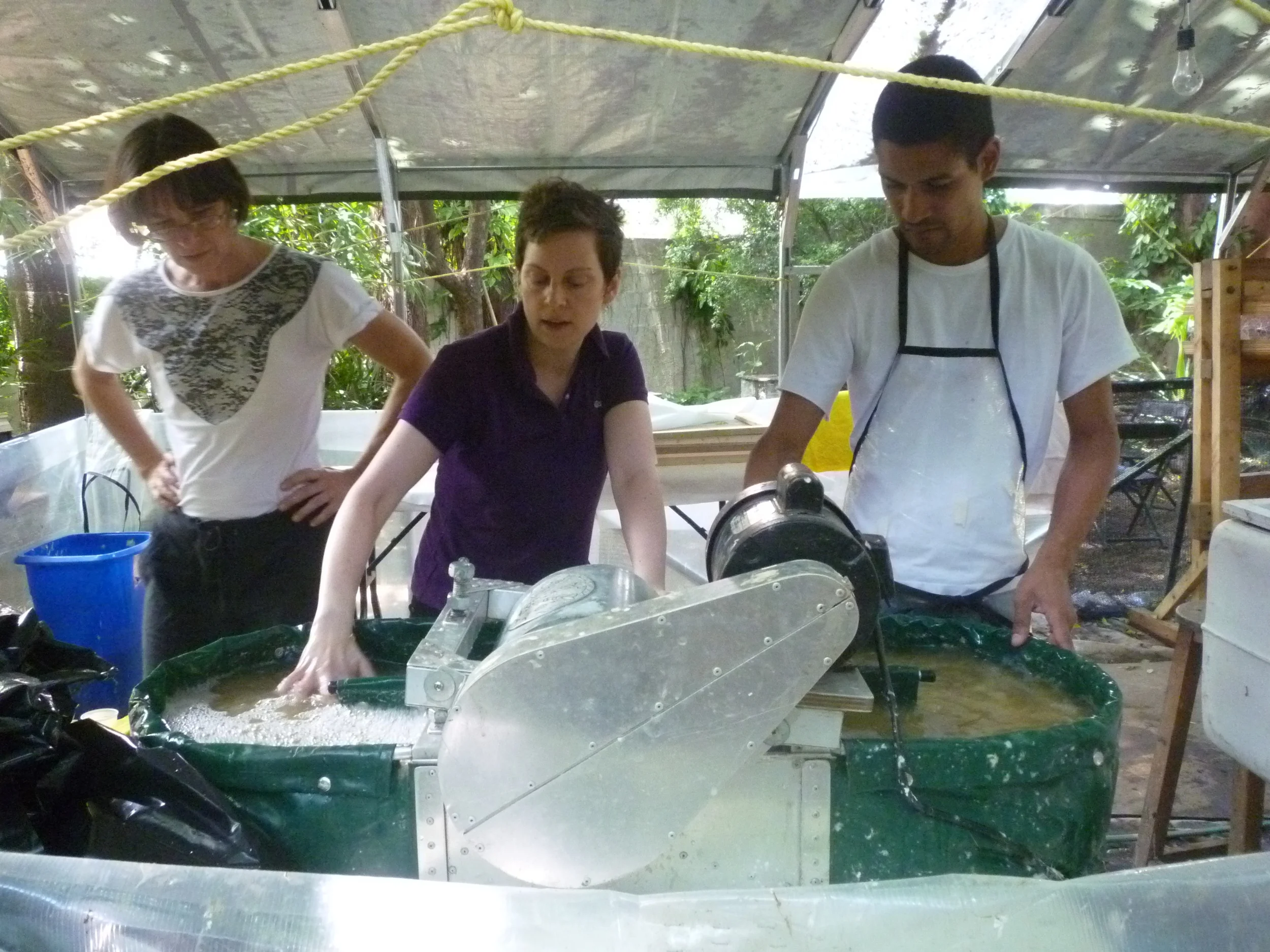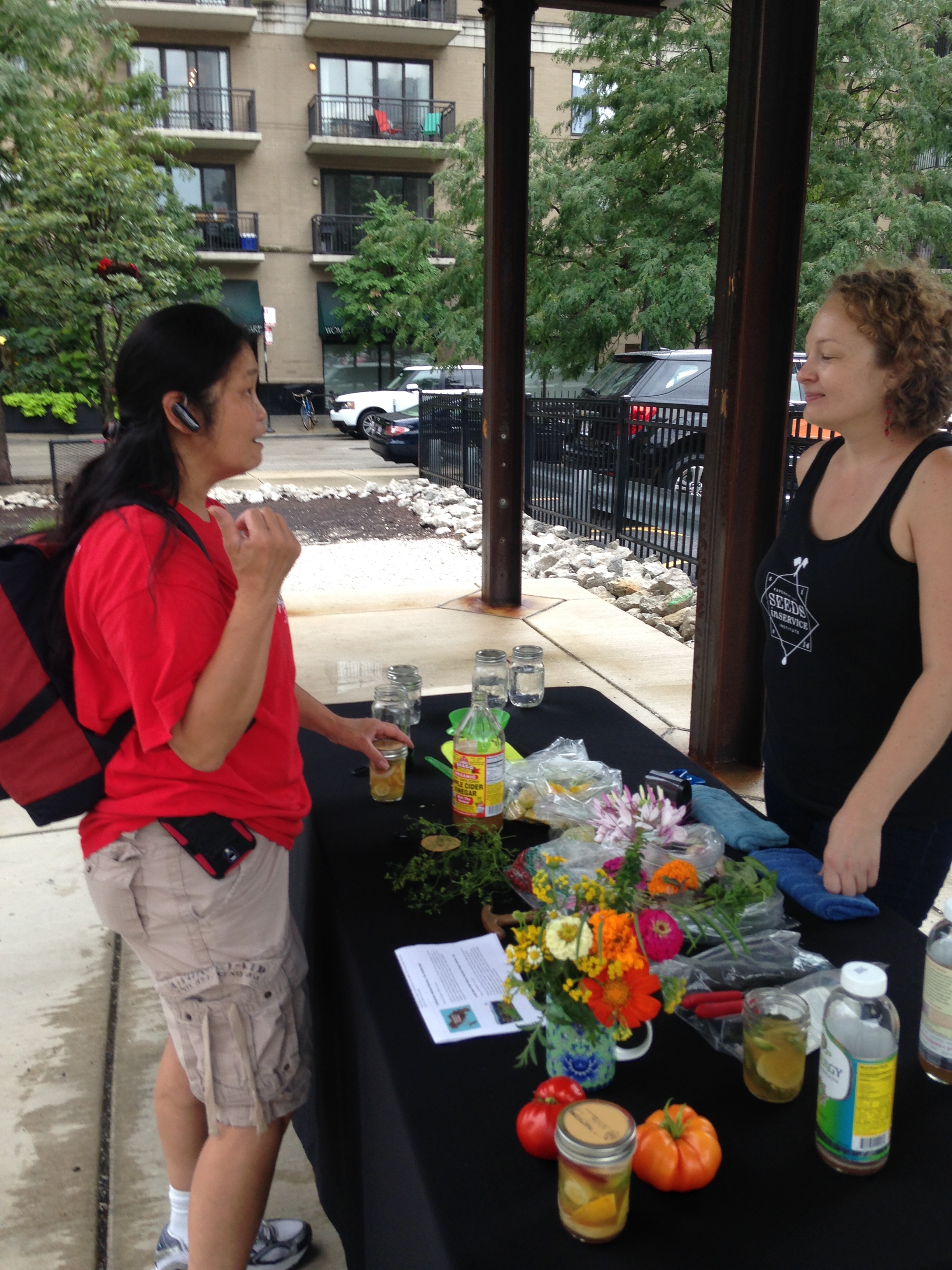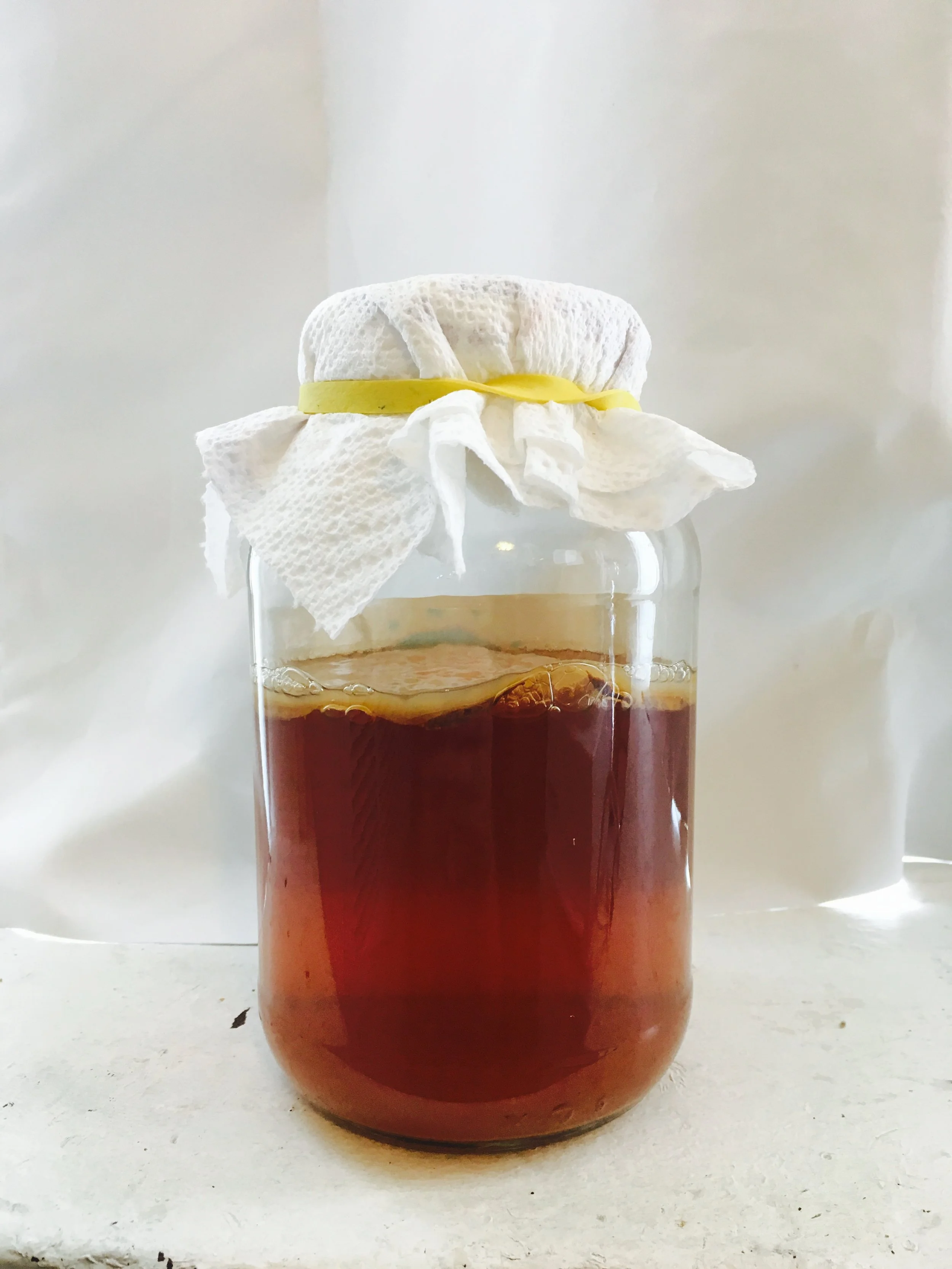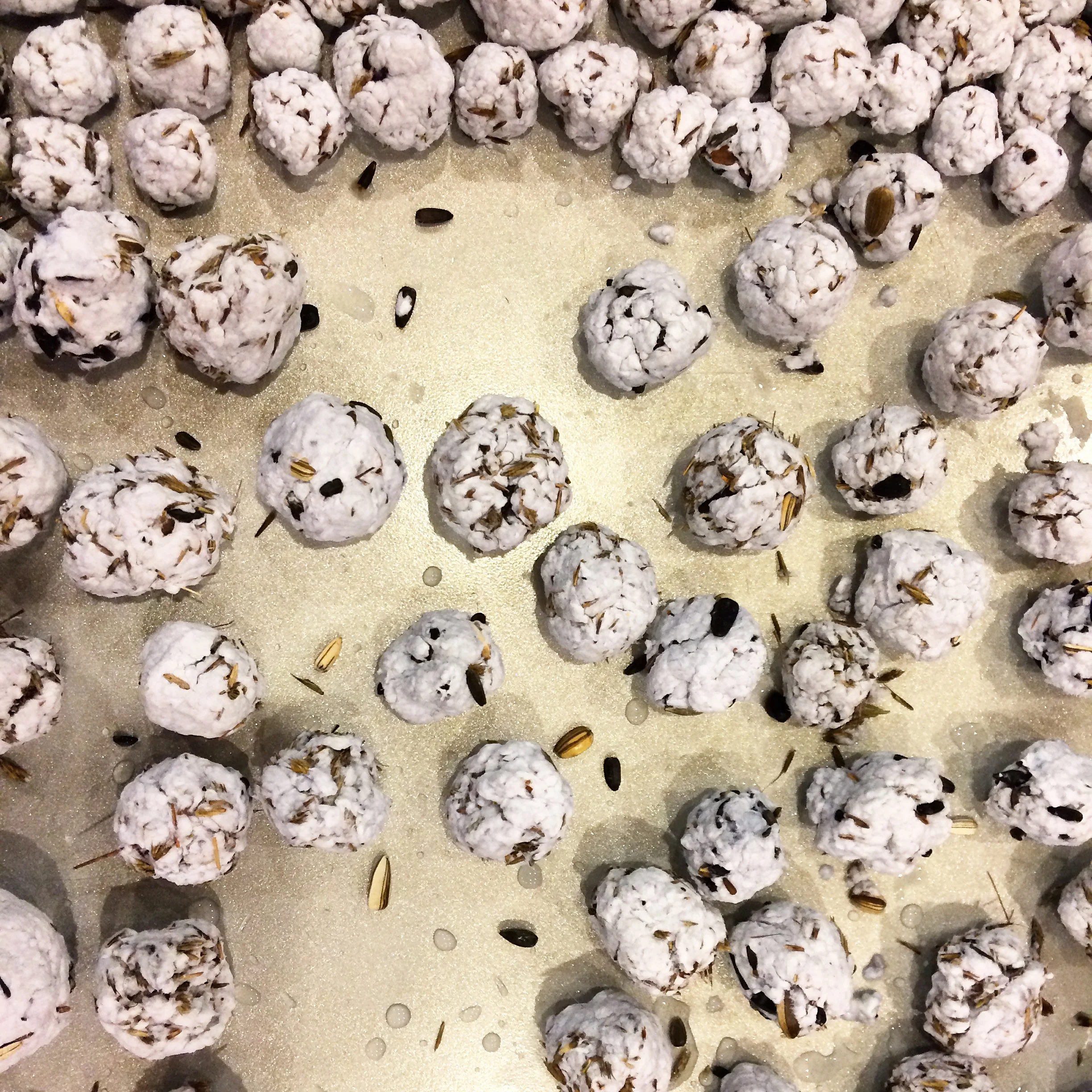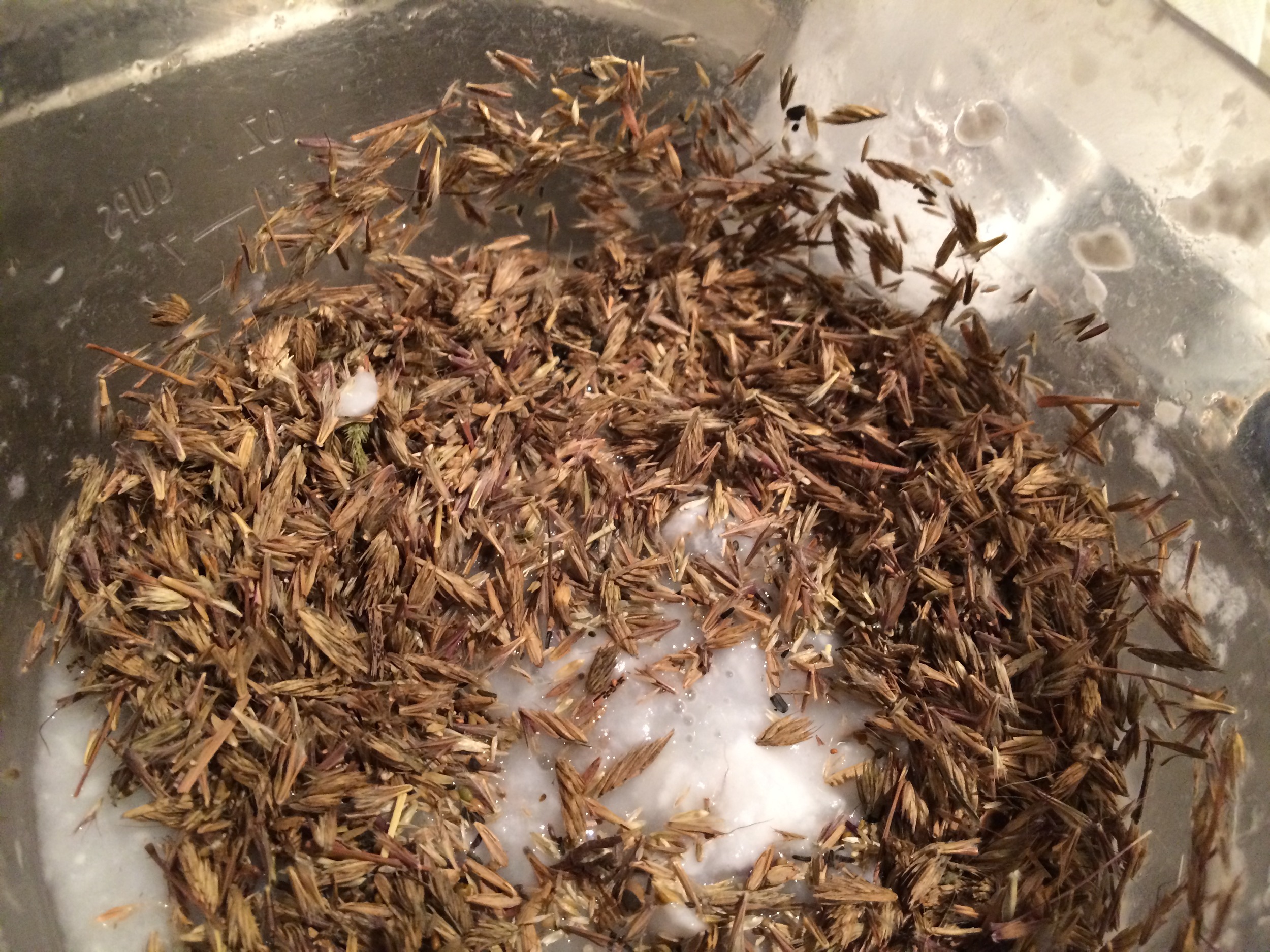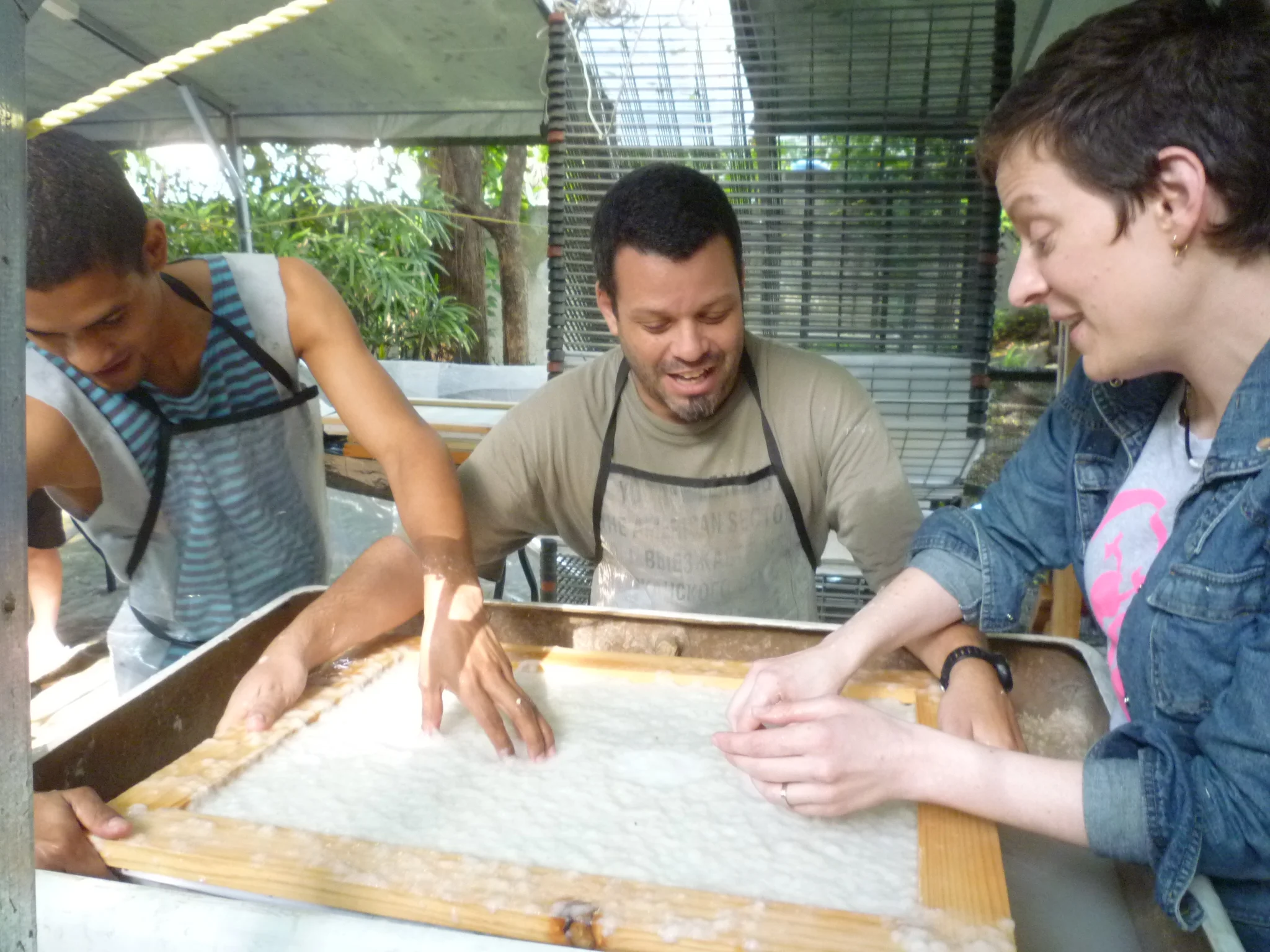First Course: Charlotte Perkins Gilman Parthenogenesis Salad
Spinach, nasturtium salad with marigold dressing
Charlotte Perkins Gilman divorced and left her family behind, afterwards she lived at Hull House for a few months. Her main feminist treatise was that sex and domestic economics went hand in hand; for a woman to survive, she was reliant on her sexual assets to please her husband in exchange for financial support. This philosophy was the genesis of her novel, Herland. The book describes an isolated society composed entirely of women, who reproduce via parthenogenesis (asexual reproduction). The result is an ideal social order: free of war, conflict, and domination.
The spinach in this salad has both male and female plants. When there are not enough males available, the female plants can change sex, and pollinate themselves via parthenogenesis, hence the name of the salad.
Second Course: Pre-Colonial Mankiller Sagamite Stew
Corn, beans, and squash stew seasoned with chili peppers, ground pumpkin seeds, and cocoa, topped with toasted pepitas and served with hopi red dye amaranth cornbread
This thick stew is made solely from New World ingredients, plants unknown to European colonists before their invasion of Turtle Island. It is based on the sacred trio of Native American crops: corn, beans, and squash, also known as the Three Sisters, which provided a balanced diet of carbohydrates, protein, and vegetable fats. It is seasoned with chili peppers, toasted pumpkin seeds and cocoa.
Pre-colonial Indigenous women were traditionally responsible for much of the planting, tending, harvesting, and cooking of foods. Without their efforts over 10,000 years of domestication of wild species we wouldn’t have any of the thousands of corn, beans, or squash varieties available today. Unfortunately, in the 500 years since colonization the indigenous population of Turtle Island has plummeted due to genocide and disease. Similarly, in the last 100 years 75% of crop diversity has disappeared. We must make the effort to preserve, unearth, and protect indigenous culture including plant species and agriculture knowledge.
This dish specifically honors the first female chief of the Cherokee Nation, Wilma Mankiller, for her incredible efforts to preserve and protect her nation’s culture and people.
Corn: Oaxacan green dent, bloody butcher, rainbow Inca sweet, Cherokee white eagle; hominy
Beans: calypso, Christmas Lima, Cherokee trail of tears, Shackamaxon blue, ojo de cabra
Squash: butternut from radical root farm; 35 miles from chicago
Pepper: ancho, guajillo
Served with Hopi red amaranth cornbread
Three Sister’s Myth
Different people told different versions of this story. Here is a Cherokee version:
Once upon a time there were three sisters. The first sister was very tall and strong; her name was Corn Girl, and she wore a pale green dress and had long yellow hair that blew in the wind. Corn Girl liked to stand straight and tall, but the hot sun burned her feet and hurt her. And the longer Corn Girl stood in her field, the hungrier she got. And every day more weeds were growing up around her and choking her.
The second sister was very thin and quick and fast, and her name was Bean Girl, but she wasn't very strong. She couldn't even stand up on her own. She was good at making food, but she just had to lie there stretched out on the ground, and she would get dirty and wet, which wasn't good for her.
The third sister, Squash Girl, was short and fat and wore a yellow dress. She was hungry too.
For a long time, the sisters didn't get along. They each wanted to be independent and free, and not have anything to do with the other two. So Corn Girl stood there with her sunburned feet and got hungrier and hungrier. And Bean Girl lay there on the ground and got dirtier and wetter. And the little fat sister Squash Girl was hungry too.
So Bean Girl talked to her sister Corn Girl and said, "What if I feed you some good food, and you can hold me up so I don't have to lie on the ground and get all dirty?" And Corn Girl thought that was a great idea. Then little Squash Girl called up to her tall sister, "How about if I lie on your feet and shade them so you won't get sunburned?" Corn Girl thought that was a great idea too.
So the Three Sisters learned to work together, so that everyone would be healthier and happier. Corn Girl helped Bean Girl stand up. Bean Girl fed Corn Girl and Squash Girl good food. And Squash Girl shaded Corn Girl's feet and kept the weeds from growing up around them all.
And that's why the Iroquois and the Pueblo people and the Aztecs and everybody in between planted their corn, their beans, and their squash together in the same field - the Three Sisters.
Third Course: Rosario E.’s Vulnerable Squash Melange
This dish is inspired by a report by Human Rights Watch titled “Cultivating Fear: The Vulnerability of Immigrant Farmworkers in the US to Sexual Violence and Sexual Harassment”.
“Hundreds of thousands of women and girls in the United States today work in fields, packing houses, and other agricultural workplaces where they face a real and significant risk of sexual violence and sexual harassment... A 2010 survey of 150 farmworker women in California’s Central Valley found that 80 percent had experienced some form of sexual harassment, while a report by the Southern Poverty Law Center found that a majority of their 150 interviewees had also experienced sexual harassment...
Victims of sexual violence and harassment are often reluctant to describe these experiences...
Sexual violence and harassment in the agricultural workplace are fostered by a severe imbalance of power between employers and supervisors and their low-wage, immigrant workers. Victims often than face systemic barriers—exacerbated by their status as farmworkers and often as unauthorized workers—to reporting these abuses and bringing perpetrators to justice...
Many more farmworkers reported incidents of humiliating, debilitating harassment in the
form of unwanted touching, pressure to engage in sexual relations, and verbal harassment.
A woman in New York stated that she had picked potatoes and onions with a supervisor
who touched all the women’s bodies, and if they tried to resist, he would threaten to call
immigration or fire them…
...sexual assault and harassment were serious problems, with one worker referring to one company’s field as the “field de calzon,” or “field of panties,” because of the number of rapes that had occurred there.”
Fourth Course: Jane Addams Tart
Caramelized onion tart
A New Conscience and an An Ancient Evil by Jane Addams lays bare the race and class problematics of the anti-prostitution movement. At the same time, Hull House workers studied the Papermaker's Garden area where many Italian, Irish and Eastern European immigrants worked at prostitutes. In their wage map research, Hull House workers could not determine wages for these women, or whether they were free at all. But they did mark the location on their maps with white boxes, a ghostly bookmark in what would become a future debate for “sex work is work.” You are eating on a cloth made from sunflower and corn plants, grown in the garden on the same location where these women worked. The tablecloth will become a mulch for our new beds next year, exploring Zapatista activism, Incan/Andean agricultural methods (vertical archipelago concept), abortifacient plants, and Bosnian women’s herbal magic and medicine.












